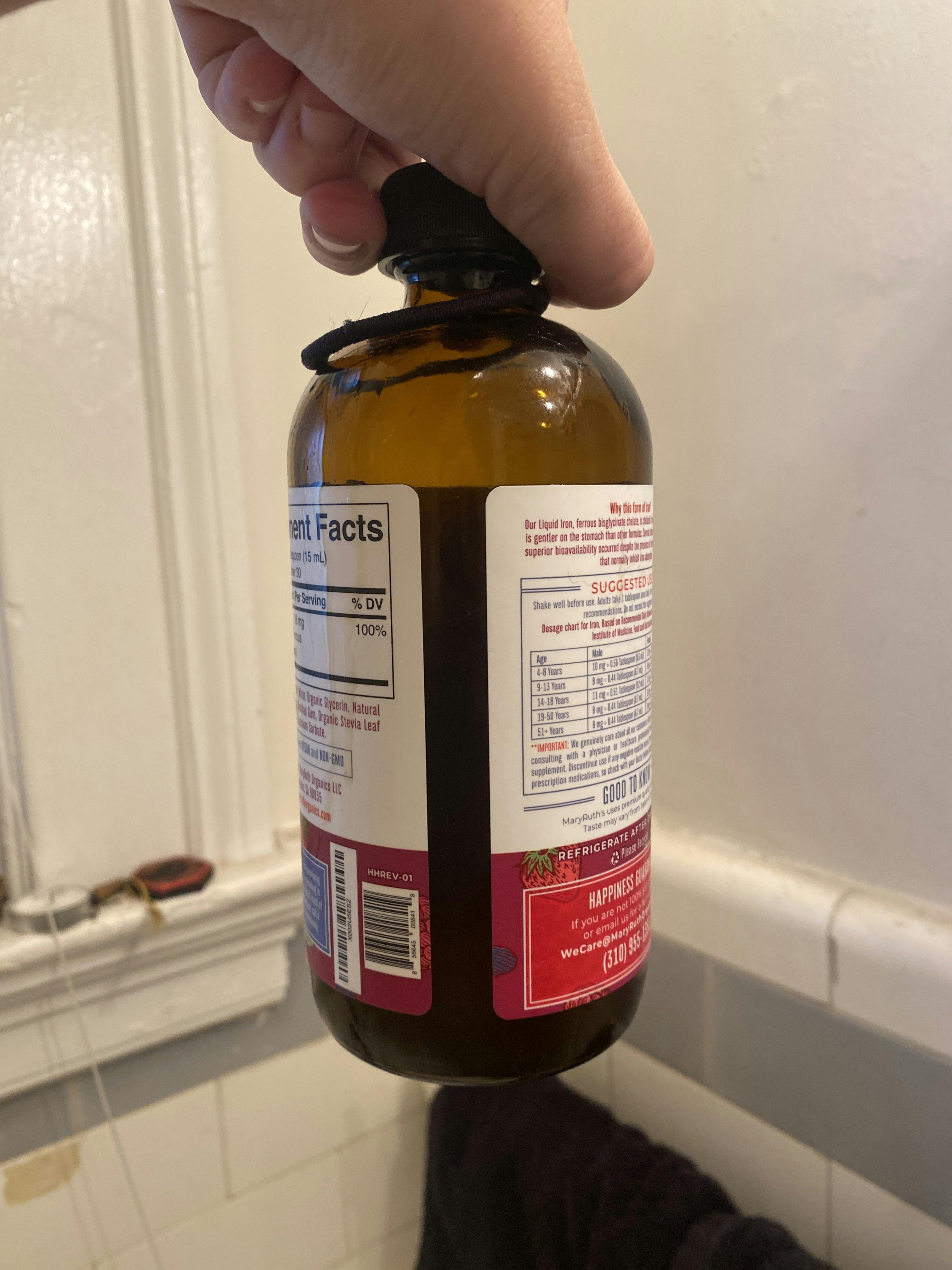

Adults take 1 tablespoon (Tbsp) (½įluid ounce/15 mL) daily either directly or mixed into water or juice. RECOMMENDATION: Shake well before each use. Malic acid, xanthan gum, potassium benzoate (preservative to maintain freshness), The study reported here reveals that oral ferrous gluconate in liquid form is more effective and above all better tolerated than other solid or liquid formulations containing elementary iron.Other Ingredients: purified water, glycerin, sorbitol, erythritol, natural flavors, It has been shown that preparations containing ferrous salts (+2) are more easily absorbed than those containing ferric salts (+3) since the former can be immediately absorbed by the duodenal mucosa. Numerous preparations containing bivalent or trivalent iron are available for the treatment of iron-deficiency anaemia during or immediately after pregnancy. Gastrointestinal and other aspecific side effects caused 1 drop-out each in Groups B and C and 2 drop-outs in Group D. As to safety, only Group A patients reported no side effects and produced no drop-outs. The same group also showed an increase in Ferritin amounting to 7.8 micrograms/dl or 24% of the basal value.

By the end of treatment the Group A patients revealed significant increases versus basal values in red blood cells (p < 0.001) 1,051,000 per mm3 or 33%, in Hb (p < 0.001) 2.83 gr/dl or 32%, in Ht (p < 0.001) 8.32% or 32%, in serum iron (p < 0.05) 19.5 micrograms/dl or 61%. However, the Group A patients treated with oral doses of liquid ferrous gluconate received a significantly lower cumulative dose of iron elements than the other groups: in detail 150 mg (p < 0.05) less than Groups B and D 900 mg (< 0.001) less than Group C. The tolerance of the 4 treatment protocols was assessed by the analysis of any side effects such as nausea, vomiting, epigastric pain, diarrhoea, constipation or other disorders reported by patients during treatment.Īnalysis of the therapeutic efficacy parameters (red blood cells, hemoglobin, hematocrit and serum iron) showed significant improvements but no statistically significant differences between the groups. Treatment efficacy was analysed by comparing basal and final parameters using the T-test for paired dependent samples. All were given iron treatment for 30 days. The women whose blood chemical parameters were largely homogeneous at the start of the study were divided into four treatment groups of 10 patients each and were treated as follows: Group A with oral liquid ferrous gluconate (75 mg per diem in 2 vials a day) Group B with solid ferrous gluconate (80 mg per diem in a single effervescent tablet) Group C with solid ferrous sulphate (105 mg per diem in a single tablet) and Group D with ferric protein succinylate (80 mg per diem in 2 vials a day).

All women with pregnancy-related pathological conditions, pre-existing on concomitant disease (Type I diabetes, heart diseases etc.) were excluded from the study. A study was therefore conducted on 40 women aged 20-35, with iron-deficiency anaemia during or immediately after pregnancy all of whom presented Hb < 10 gr/dl, Ht < 33% and serum iron < 60 micrograms/dl. It is also now clear that women who take iron supplements during pregnancy do not suffer the same post-natal reduction in hemoglobin and ferritin as those who don't make it. From the early months of pregnancy and even more so later, women suffer a deficiency of iron along with a decline in their red blood cell count.


 0 kommentar(er)
0 kommentar(er)
